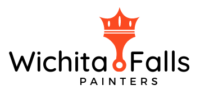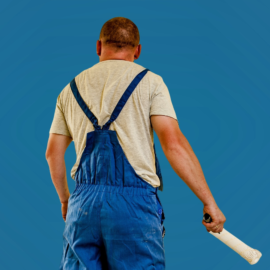
Novice house painters have never had as much assistance as they do today. Scores of new paints and equipment sets are available everywhere over the most recent couple of years. This makes it feasible for new painters to paint their own homes nearly as effectively as an expert. From one-coat paints to dispensable blowtorches, everything has been intended to make the work speed up, look better and cost less. With the new external wall paint rollers, you can paint a normal size house in a few days. Add an extension handle and you can move a porch without lowering down. Then arrive at a rooftop without leaving the ground.
Painting Hard Spots
Interior paints are utilized to acquire satisfying enhancing impacts. Which can work greatly on sterile conditions, and guarantee better lighting. These paints might be partitioned into four kinds. Such as wall primers; one-coat flats; flat, semigloss, and gloss; and water paints.
Wall primers or preliminary sealers are expected to be applied straightforwardly to exposed plaster, wallboard, and similar permeable surfaces. To give a uniform sealed surface for resulting layers of paint. A commonplace wall primer might be produced using varnish or bodied-oil vehicles and concealing colors. It is indeed expected to enter somewhat into permeable surfaces.
The wall primers are best applied with a wide wall brush.
One-coat flat paints are naturally dissolvable and diminished paints. Expected to achieve priming, sealing, and get done with coating in one activity. They are regularly sold in slight glue-like stuff. So that extra reasonable thinner might be added. Also can be blended before application to build the volume of paint by one-fourth or more.
Flat, semigloss, and gloss interior paints and polishes fluctuate in the level of sparkle, concealing power, and different properties. Paints giving the best concealing power are ordinarily paints of the most reduced gloss. Also, some advanced high shine finishes likewise have great concealing power.
Water-diminished inside paints are calcimine, casein, gum emulsion, and gleam water paints. Calcimine comprises powdered whiting and mud blended in with an animal stick binder and an additive. It can’t be recoated, yet can be easily washed off before rearranging.
New Paints Give You Pro Skills
One precaution: You can’t paint with it in a chilly climate. The synthetic response changes the water arrangement into a durable finish. That won’t occur if the temperature is below 50°. (Ordinary oil paints don’t stick well in chilly climates.) A few makers suggest their vinyl paints for inside just as outside use. Others say no, not all are great for both. There are types of vinyl made explicitly for insides.
Most certainly the great inside house is a new vinyl primer-sealer to be utilized as a base coat under any paint. It dries in just 30 minutes. You can put it around a room and presumably follow quickly with the completion coat. It tends to be applied with a brush or roller.
Acrylic is the second new name for wizardry in paints. This is likewise plastic-in-water. Strong acrylic you know as the wonderful, glasslike Plexiglas and Lucite. Inside the house is the place where acrylic sparkles. It dries quicker than different kinds, and it keeps its tone better, without yellowing. One con is that it costs more.
A few acrylics are additionally suggested for outsides (over similar sorts of materials as vinyl paints). Here it gains a major benefit – you don’t need to pick your wall painting climate so cautiously. It tends to be applied on sticky days and in chilly seasons. As the temperature is a couple of degrees above freezing.
Alkyd
Alkyd is an old interior paint, made recently. It is well known by a change of dissolvable – a super-refined oil substance that has basically no scent. It’s not a water paint. You make it thin and clean brushes with mineral spirits or turpentine. And then again, assuming you need to hold the unscented property, with the new scentless dissolvable. (Ask the paint-store individual for that, scentless dissolvable).
Alkyd has strong benefits superseding the slight cleanup in-comfort. It is extraordinarily intense and extremely impervious to cleaning. It stands up well in the problem areas – trims, washroom, kitchen. Also, it is not difficult to apply, delivering a smooth, even finish free from streaks and brush marks.
Paint Selection
Most paints are bought which are already prepared by blending. The first thought ought to be given to the way that surfaces shift in their versatility with respect to paints and the environment. Also by different conditions adversely affect paint execution. Despite having the typical weather activity of sun and rain, the outside house paints are sometimes presented to other assaulting components. For example, destructive exhaust from industrial facilities or exorbitant measures of wind-driven residues.
For areas where such conditions exist, self-cleaning paints ought to be chosen. These paints are generally so assigned on the mark. Cement, plaster, and metal surfaces each present unique issues in painting. For example, paint for use on stonework or new plaster should be impervious to dampness and alkalies. And paints used on steel should have rust-inhibitive properties.
Every colour maker has a “colour framework,” a fat book of colour chips with guidelines for copying each chip. This is refined by intermixing jars of colour paints. Adding a concentrated shading to a container of white or hued paint. Else by adding concentrated shading or tones to a jar of nonpartisan “base” paint. Furthermore, for the individuals who don’t need any mystery, there’s the Colour Carousel that blends the paints well in the store. Whatever the strategy is, the outcome is a scope of tones that no beginner painter has ever seen.
Mixing
Glue paints, like aluminium, resin-emulsion, and lead-in-oil, should be blended with a stiff paddle. And decreased painting consistency with the fluids suggested on the producer’s marks.
Paints in powdered structure require the addition of fluid to set them up for use. The maker’s directions concerning the measure of oil, stain, water, or other vehicle required should be followed.



